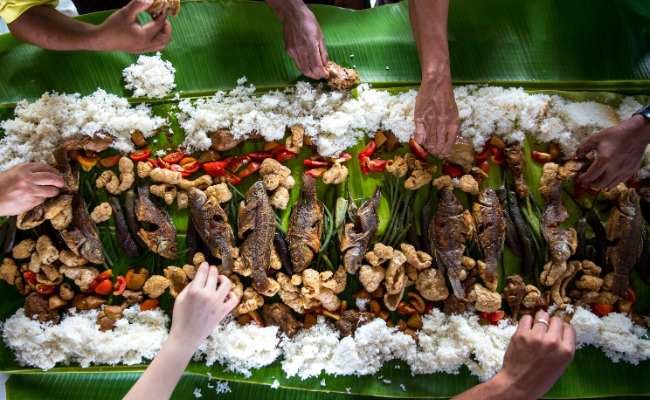4 more essential Filipino gestures you can use daily

Photo by Avel Chuklanov on Unsplash
Once you’ve mastered the gestures Filipinos make to be respectful and cordial to family, friends, and acquaintances, it’s time to learn more casual expressions you’ll encounter daily.
Here are four more important Filipino gestures to remember if you interact with Filipinos every day—especially useful for that vacation in the Philippines.
“Kain!”
Meals and the sense of family and community are central to Filipino life. So don’t be surprised if you visit a Filipino home, especially around mealtimes, and get invited to eat.
“Kain tayo!” or simply “kain!” is an invitation often accompanied by the gesture of pinched fingers (or as others call it, the Italian hand or pinecone hand), moving and pointing towards the speaker’s mouth. It’s also akin to the sign language equivalent of “eat.”
This motion for eating can also be attributed to how we sometimes eat with our hands.
Getting the check (“Bill out”)
When dining at a restaurant with Filipinos, you might notice a unique gesture made at the end of the meal. Get the attention of the waitstaff and, using two hands with fingers in Ls, draw a rectangle in the air. Sometimes accompanied by mouthing the words “bill out,” this means you’re asking for your check.
The clarificatory “ha?”
If you’re in the middle of a conversation and your friend has their mouth open, don’t take it as a sign of rudeness. Usually, this face, made while saying “ha?” means what you just said was unclear or confusing. That’s your cue to clarify or repeat.
You may also like: 5 essential Filipino gestures you need to know
“Psst!”
A slightly discreet way of getting one’s attention is the “psst”—a hiss, or what Filipinos call, “sutsot.” Instead of saying “hey” to call a friend, you can just say “psst.”
For example, if you want to alert your friend that their *favorite* person just entered the room, you can do a combo of “psst,” and then point with your lips.

